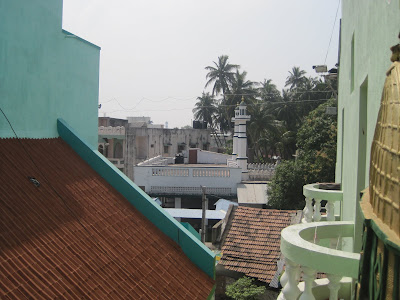 Andy + Coconut tree = <3
Andy + Coconut tree = <3We have been at Solitude a week now and we are much happier here. Sadhana Forest had many rules including: no competitive games or sports (including card games), no non-vegan food allowed on campus and (possibly the worst) a very extensive toilet procedure. Using the compost toilets at Sadhana Forest was a non-trivial procedure. There were at least two different holes, and three different buckets per cubicle. One hole was for liquid and only liquid waste, the second for solid and only solid waste. If you went poop, you had to scoop one scoopful of sawdust into the hole and then waddle over to the liquid waste hole in order to use the bum wash because no liquid could be in the solid, dry waste hole. If you had to pee while you pooped, you needed to use a pan with a handle on it to catch the pee and then dump that into a second bucket that was used to water the flowers. Needless to say, this was more complicated than necessary (especially when suffering from diarrhea). When we arrived at Solitude Farm and the owner, Krishna, was giving us an orientation, his description of toilet procedure were music to our ears: "Yeah, so basically you can shit and pee wherever you like." We knew right away that we would like our stay here at Solitude.

The windmill pumps water from the well. At the top, it says "varagu"
a local millet that Solitude is trying to re-establish.
We are lucky to be at the farm during this time because Krishna is hosting a 9 day workshop on Natural Farming and Permaculture techniques. We read aloud from the book, One Straw Revolution and discuss the techniques that are used on the farm. Our work so far has involved some weeding, mulching, planting in the nursery and harvesting dahl (lentils) and rice. Middays get pretty hot and sticky, but that problem is easily solved by taking a dip in the well.

This is a maniac Italian named Devid. The water is about 20 ft down!

Milling varagu the old fashioned way.
Andy and I are finally getting used to thin mattresses, and have come to the terms with the rats that share our hut. All is going well in Southern India!







